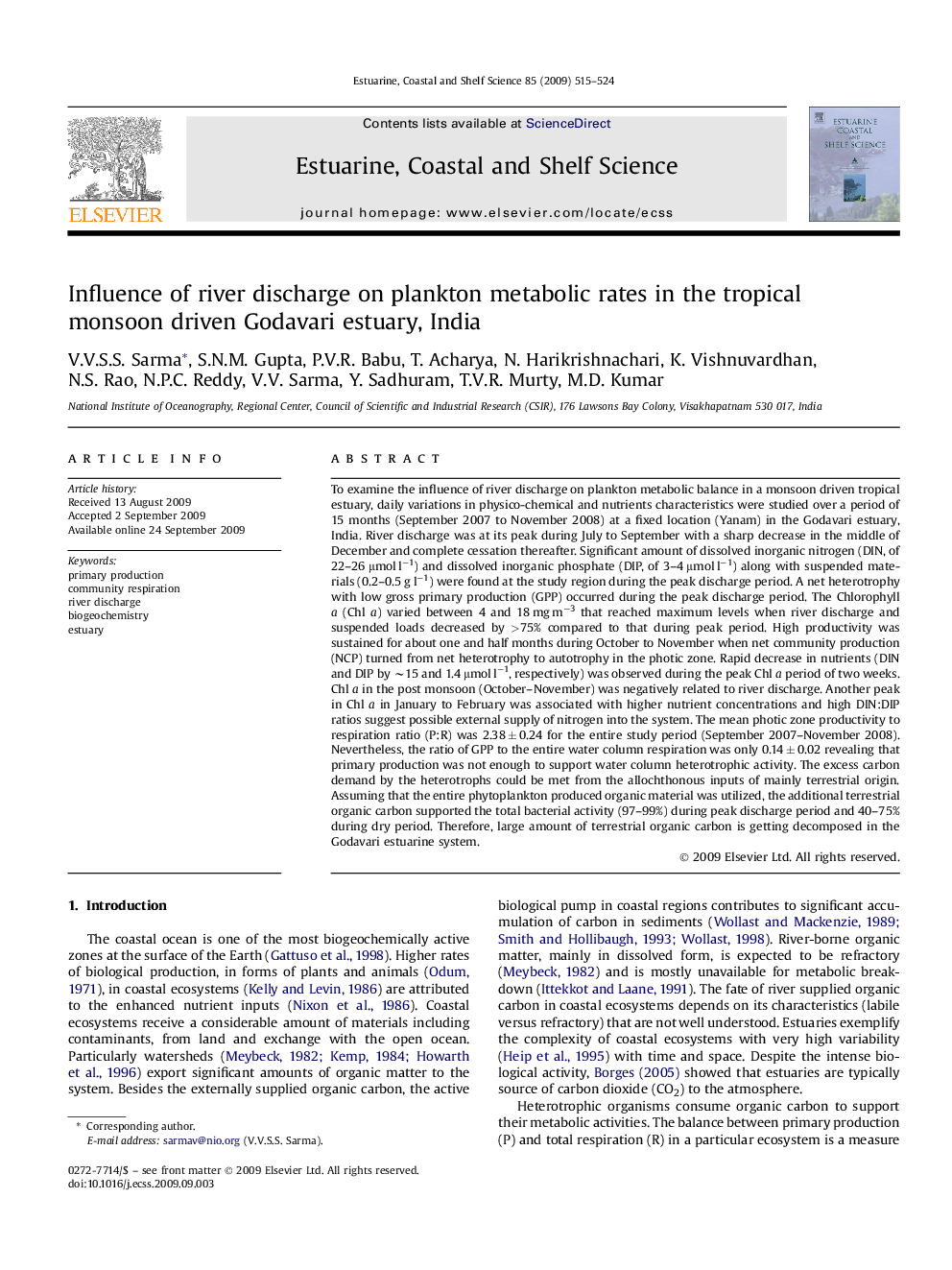| کد مقاله | کد نشریه | سال انتشار | مقاله انگلیسی | نسخه تمام متن |
|---|---|---|---|---|
| 4541271 | 1326716 | 2009 | 10 صفحه PDF | دانلود رایگان |

To examine the influence of river discharge on plankton metabolic balance in a monsoon driven tropical estuary, daily variations in physico-chemical and nutrients characteristics were studied over a period of 15 months (September 2007 to November 2008) at a fixed location (Yanam) in the Godavari estuary, India. River discharge was at its peak during July to September with a sharp decrease in the middle of December and complete cessation thereafter. Significant amount of dissolved inorganic nitrogen (DIN, of 22–26 μmol l−1) and dissolved inorganic phosphate (DIP, of 3–4 μmol l−1) along with suspended materials (0.2–0.5 g l−1) were found at the study region during the peak discharge period. A net heterotrophy with low gross primary production (GPP) occurred during the peak discharge period. The Chlorophyll a (Chl a) varied between 4 and 18 mg m−3 that reached maximum levels when river discharge and suspended loads decreased by >75% compared to that during peak period. High productivity was sustained for about one and half months during October to November when net community production (NCP) turned from net heterotrophy to autotrophy in the photic zone. Rapid decrease in nutrients (DIN and DIP by ∼15 and 1.4 μmol l−1, respectively) was observed during the peak Chl a period of two weeks. Chl a in the post monsoon (October–November) was negatively related to river discharge. Another peak in Chl a in January to February was associated with higher nutrient concentrations and high DIN:DIP ratios suggest possible external supply of nitrogen into the system. The mean photic zone productivity to respiration ratio (P:R) was 2.38 ± 0.24 for the entire study period (September 2007–November 2008). Nevertheless, the ratio of GPP to the entire water column respiration was only 0.14 ± 0.02 revealing that primary production was not enough to support water column heterotrophic activity. The excess carbon demand by the heterotrophs could be met from the allochthonous inputs of mainly terrestrial origin. Assuming that the entire phytoplankton produced organic material was utilized, the additional terrestrial organic carbon supported the total bacterial activity (97–99%) during peak discharge period and 40–75% during dry period. Therefore, large amount of terrestrial organic carbon is getting decomposed in the Godavari estuarine system.
Journal: Estuarine, Coastal and Shelf Science - Volume 85, Issue 4, 15 December 2009, Pages 515–524